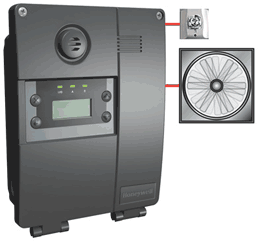Parking Garages & Gas Detection
Parking garages can be dangerous to drivers’ and workers’ health, particularly those that are underground or completely enclosed by concrete walls. These spaces trap car exhaust fumes and other gases, posing serious health and safety concerns if they are not monitored and controlled.
While the smell of car exhaust may or may not be present, everyone in or around a parking garage is exposed to some elevated level of automobile exhaust and other harmful gases. This includes drivers, passengers, garage employees and pedestrians walking by.
It is very important that building operators maintain the monitoring sensors and ventilation systems in their parking garages to protect building occupants and visitors from carbon monoxide and other harmful gases present in these spaces.
Gases Found in Parking Garages
According ASHRAE Handbook, the most serious concern presented by operating automobiles in closed spaces such as parking garages is carbon monoxide emissions. This is followed by “the presence of oil and gasoline fumes… [however,] the ventilation required to dilute carbon monoxide to acceptable levels will also control the other contaminants satisfactorily.”
In parking structures, CO (Carbon monoxide) and NO² (nitrogen dioxide) are two of the most abundant airborne contaminants and levels must be controlled or ventilated when concentrations approach unsafe levels. If liquid natural gas vehicles (LNG) are present CH⁴ (Methane) sensors may be needed to monitor levels of methane in parking garages as well.
Carbon monoxide is dangerous in any building environment because it is odorless and colorless, and therefore there is little warning of its presence at harmful levels. And, because symptoms of exposure mimic that of common ailments such as a stomach or headache (or sometimes, the flu), it’s hard to distinguish CO as the cause and most people simply treat their symptoms without realizing they have had CO exposure.
In residential parking garages, this is particularly dangerous since carbon monoxide gas can seep through the walls, cracks and piping and into living and work spaces without proper ventilation and sensor monitoring.
NO² is another major contaminant when diesel-powered vehicles will be used or stored in parking garages, and therefore must be considered in the design of the garage’s ventilation system. Nitrogen dioxide is a byproduct of fossil fuel combustion, and unlike CO, even low concentrations of NO² has an odor that can be easily smelled. Some of the garages where nitrogen dioxide monitors are necessary include maintenance garages for buses and trucks, car dealerships, train stations, rapid transit authorities, loading docks, ambulance bays and of course structures for diesel-powered vehicle parking.
Methane (CH⁴) is a highly flammable and explosive gas that reacts violently when it comes into contact with strong oxidants. It is colorless and odorless, and since it is less dense than air, it can accumulate under the ceiling of a parking garage. Additionally, methane in its compressed form (CNG) is used to power some efficient vehicles, which have become increasingly popular in recent years.
Sensors for carbon monoxide, nitrogen dioxide and methane must be maintained on a regular schedule that is consistent with the manufacturer’s instructions. As a part of that maintenance technicians should be sure that the sensors are calibrated correctly to ensure optimal operation and function. Exhaust fans and ventilation systems must also be regularly maintained and used according to building code to protect the health of garage users and workers.
Building Codes Related to Parking Garages
There are a couple of building codes relating to parking garages and the harmful gases found in parking garages:
- International Mechanical Code (Section 404.1): Mechanical ventilation systems for public garages are not required to operate continuously where the system is arranged to operate automatically upon detection of a concentration of carbon monoxide of 25 ppm by approved detection devices.
- Uniform Building Code (Section 705): In all parking garages…automatic CO sensing devices may be employed to modulate the ventilation system to maintain a maximum average of CO of 50 ppm during any eight-hour period, with a maximum average concentration not greater 200 ppm for a period not exceeding one hour
- Most state, and local municipal building codes recognize and recommend using carbon monoxide monitors in enclosed parking garages. If the building code in your area does not have any provisions for CO monitoring, do not forget that carbon monoxide is still a very dangerous gas to personal health and safety. Therefore, the use of common sense by design engineers is still the best “building code” to use.
Contact Us
Please fill out the form below and we will be in touch.


